With the exponential growth of artificial intelligence, one puzzling question that keeps surfacing among the data scientists, corporate strategists, and business entrepreneurs alike is: How much does it cost to train an AI model? The answer is, of course, isn’t simple. It’s a complex equation that depends on several factors, such as the size and complexity of the data, computational power, the type of model, and the latest technological innovations.
Imagine standing at the crossroads of innovation and investment, where advanced machine learning (ML) and financial budgeting come together. Training an AI model is no longer just a technical challenge— it’s a financial one too. Depending on your goals and resources, the cost can range from a few thousand dollars to several million. We’ll break down all of them to provide you with a comprehensive, actionable understanding of AI model training costs, types of AI models, and information on related sensitive matters.
Understanding AI Model Training Cost: Types & Influencing Factors
According to the data shared by Epoch AI, the cost of training AI models has skyrocketed over the last few years. Additional information suggests that these recent developments demonstrate significant progress in the technological sector within a relatively brief period. The global hype for AI technology began with OpenAI’s launch of ChatGPT-4 in March 2023 and continued with Google’s subsequent release of its more sophisticated Gemini model in December 2023.
Epoch AI’s research findings suggest that both models require significantly higher investments compared to older-generation AI models, which leads us to the conclusion that they spend around hundreds of millions on them. However, these are foundation models, and what if you want to build a simple chatbot or something more advanced, such as a recommendation engine? So understanding their potential costs is extremely helpful.
Types of AI Solutions with Prices
Artificial intelligence has a multitude of applications across various sectors, so the development expenses for different types of AI models vary in price. For example, Amazon AI is both a recommender engine and a chatbot that serves customers and handles their queries, exemplifying the diverse applications of AI technologies. Let’s analyze the cost of some of the most popular types of AI for a better understanding:
| AI Solution Type | What It Does | Industry | Cost Estimate (USD) |
|---|---|---|---|
| Chatbot | Automates customer service, answers FAQs, and provides guided interactions | Customer Service, E-commerce, Healthcare, Banking | $6,000 |
| Recommendation System | Suggests products, content, or services based on user preferences/behavior | E-commerce, Retail, Media & Entertainment | $15,000+ |
| Fraud Detection System | Identifies suspicious patterns in transactions or behavior to prevent fraud. | Finance, Banking, Insurance, E-commerce | $20,000+ |
| Predictive Maintenance Software | Forecasts equipment failures to enable proactive maintenance, reducing downtime. | Manufacturing, Energy, Transportation | $20,000+ |
| Image Recommendation System | Identifies and classifies objects, faces, or patterns within images and videos. | Security, Healthcare, Retail, Automotive | $30,000+ |
Remember that these are just a few considerations with rough price estimates. Other factors include the number of datasets required to train your AI model, the complexity of algorithms, and the rates from the AI development company you wish to hire, among other things.
As for the industries, we have several other blog posts that cover the applications of Generative AI across various sectors. They’re:
- Benefits of Generative AI In Document Extraction & Analysis
- AI Software Development Costs
- Use Cases of AI In the Construction Industry
Since every case is unique, you can contact us to arrange an appointment and learn how much it costs to train an AI for your specific needs.
Main Factors Influencing the Cost of Training AI Models
The cost of AI may vary widely. The price for a basic project typically starts around $10,000, but for more tech-heavy and complex projects, prices can exceed $200,000. After analyzing the AI development projects published on Clutch, the prices generally average between $10,000 and $49,000. This price range extends even further, involving several factors that influence the overall cost of training AI models.

Project Type
The kind of AI project you’re working on can significantly influence the cost of training and development. For example, chatbots and recommendation systems tend to be less advanced compared to sophisticated natural language processing systems (NLPs) or fully autonomous vehicles, making them easier and cheaper to develop.
Data Requirements
One of the primary factors determining the cost of training AI is the volume and quality of data required to train the model. Projects that require massive amounts of data to be collected, cleaned, and pre-processed often require more time and resources.
| Data Aspect | Notes | Cost Estimate (USD) |
|---|---|---|
| Data Acquisition (purchase) | Varies by volume, uniqueness, and domain. Healthcare or financial data can be significantly higher | $1,000 – $100,000+ (per dataset) |
| Data cleaning/pre-processing | Essential for removing errors, inconsistencies, and preparing data for training. | 15% – 30% of total data cost, or $5,000 – $100,000+ |
| Data Annotation/Labelling | Varies by data type (image, video, text, audio), complexity of annotation, and required domain expertise. | $0.03 – $3.00+ per label/object; $6 – $30+ per hour (for annotators) |
| Synthetic Data Generation | For scenarios where real data is scarce or privacy-sensitive | $10,000 – $100,000+ |
Complexity of AI Model
The higher the complexity of the AI model, the more expensive it is to develop. More complex models, which integrate advanced algorithms and complex features, usually require longer development times, leading to increased costs.
| AI Model Complexity | Notes | Cost Estimate (USD) |
|---|---|---|
| Basic ML Algorithms | For basic predictive analytics, classification. Less computationally intensive | $5,000 – $50,000 |
| Deep Learning Models | For computer vision, NLP, and sophisticated prediction. Requires more data and significant computing | $30,000 – $50,000+ |
| Foundational Models (LLMs) | Due to the immense data and computing needs, training large language models (LLMs) from scratch is reserved for tech giants | $1M – $100M+ |
| Pre-trained and Fine-tuning Models | Adapting an existing powerful model (e.g., GPT, Llama) to specific tasks; highly cost-effective compared to training from scratch | $5,000 – $50,000+ |
Hardware & Infrastructure
The required hardware equipment and infrastructure contribute to the overall cost associated with AI training and development. Specialized equipment like CPUs, GPUs, servers, or other types of hardware components is necessary for efficient AI model training and development.
| Hardware & Resources | Notes | Cost Estimate (USD) |
|---|---|---|
| Cloud GPU | Varies significantly by GPU type, cloud provider (AWS, Azure, GCP), region, and instance configuration. High-end GPUs are at the higher end | $0.50 – $4.00+ (for NVIDIA A100/H100) |
| Training Time | Longer training times for complex models or larger datasets directly scale cloud costs | $100s to $10,000s per day (based on GPU usage) |
| Cloud Storage | Storing large datasets, model checkpoints, and logs. | $0.02 – $0.20 per GB/month |
| In-House Hardware | High initial investment; may be cost-effective for very long-term, continuous training if utilization is high | $10,000 – $200,000+ (upfront for a single powerful server) |
Development Tools & Frameworks
The selection of development tools and frameworks determines the overall cost of AI training. Other tools or frameworks may charge a licensing fee or require the development team to go through additional training and learn a new system.
| Development Tools/License | Examples/Notes | Cost Estimate (USD) |
|---|---|---|
| Open-Source Frameworks | TensorFlow, PyTorch, Scikit-learn, Hugging Face Transformers. Community support | Free |
| Proprietary AI Platforms | IBM Watson, DataRobot, and specialized MLOps platforms. Offer managed services, advanced features, and support | $5,000 – $100,000+ (annually) |
| Third-Party AI APIs | For specific functionalities like advanced NLP, computer vision, or generative AI, without training your own model | $0.001 – $10.00+ per API call (usage-based) / $500 – $50,000 (monthly/yearly plans) |
| Data Labelling Software | Tools to manage and facilitate the data annotation process. | Free (open-source) to $100s – $1,000s (monthly/per user) |
Development Team
The size and experience of the development team influence the cost of AI training. If you end up hiring professionals or outsourcing some steps of the development, expenses are likely to grow significantly.
| Development Type | Total Hours | Hourly Rate | AI Prototype Cost (USD) |
|---|---|---|---|
| In-House Development | 284 hours | $50 – $99 | $14,200 – $28,116 |
| Outsourced Development | 284 hours | $25 – $49 | $7,100 – $13,916 |
Maintenance & Management
System maintenance and management costs should also be considered even after the AI model’s deployment. Like other IT solutions, AI systems require ongoing maintenance, updates, and adjustments over time, which contribute to the overall expense.
Most Popular LLM AI Model Training Cost: Complete Price Breakdown
Foundation models, also known as “large language models (LLMs),” are extensive AI systems trained on vast datasets. They allow them to perform tasks in diverse industries and sectors. They serve as the base upon which more specialized models can be built or tailored by companies or individuals for specific applications. After foundation models undergo initial training (referred to as pre-training), many organizations choose to augment the further training to modify the model with specific functionalities. This additional training is referred to as fine-tuning.
A few examples of fine-tuned LLM AI models include:
- Jasper AI (runs OpenAI’s engine fine-tuned on legal datasets)
- Code Assist (is a writer trained in ad copy and SEO)
- Harvey AI (Gemini-based coder)
- Zoom AI Companion (Claude-based meeting assistant trained to understand and summarize business meetings)
With the increasing sophistication of AI models, training an AI model now comes at a higher cost (see the OpenAI GPT API Pricing Calculator). Below is a compilation of major foundational LLMs with their estimated training costs used by US corporations and accessible via US cloud computing behemoths AWS, Microsoft Azure, and Google Cloud:
Open AI
ChatGPT was created by OpenAI, the research lab behind a number of more famous AI projects that have defined the modern age of intelligent language systems. It was the fastest-growing consumer app in history, reaching 100 million monthly active users in just two months after its launch in late November 2022. Its largest investor so far is Microsoft, which has spent at least $13 billion on the company, though SoftBank is reportedly gearing up to make a much bigger investment.
| AI Model | GPT-1 | GPT-2 | GPT-3, 3.5 | GPT-4, 4o, 4o-mini, 4-turbo | OpenAI o1 |
| Release Date | 2018 | 2019 | 2020, 2022 | 2023, 2024 | 2024 |
| Parameters | 117 million | 1.5 billion | 175 billion | 1.7 trillion – 4 trillion | Unknown |
| Estimated Training Cost (USD) | < $50,000 | ~ $40,000 | From $4.6M – $12M – $15M | $78M just for GPT-4 | Unknown |
Google is regarded as one of the most influential and esteemed players in the AI development industry, with its unmatched collection of AI researchers. ChatGPT owes its existence to its pioneering research group, Google, for its groundbreaking work. Google created an architecture named “Transformer” in a landmark paper, “Attention Is All You Need,” that later served as a model for OpenAI’s GPT series of large language models. The term “GPT” is a short acronym for “Generative Pre-Trained Transformer”.
| AI Model | Gemini 1 (Ultra, Pro, Nano), 1.5 | Gemini 2 Flash |
| Release Date | 2023 | 2024 |
| Parameters | 1.8 billion – 1.5 trillion | Unknown |
| Estimated Training Cost (USD) | $191M just for Ultra | Unknown |
Anthropic
Anthropic is viewed as the nearest competitor to OpenAI, having been established by ex-OpenAI staff who played a significant role in the organization’s early research on large language models. Its primary investors are Amazon and Google. What sets Anthropic apart is its focus on developing safety-centric AI tech through “constitutional AI”, a technique they developed aimed at aligning AI with ethical human principles during the training phase of LLMs.
| AI Model | Claude 2, 3 (Haikku, Sonnet, Opus) |
| Release Date | 2023, 2024 |
| Parameters | unknown |
| Estimated Training Cost (USD) | $10M just for Sonnet |
Meta
Meta is a key player in open-source large language models with its Llama family of models. After switching to Metaverse back in 2021, Mark Zuckerberg, the CEO of Meta, has increasingly turned his attention towards AI developments since the success of ChatGPT. He now offers these models as open-source, allowing other developers to leverage and improve them, which can be re-integrated into the meta-powered social media applications.
| AI Model | Llama | Llama 2 | Llama 3, 3.2, 3.3, |
| Release Date | 2023 | 2023 | 2024 |
| Parameters | 7 billion, 13 billion, 33 billion, 65 billion | 7 billion, 13 billion, 70 billion | 1 billion – 405 billion |
| Estimated Training Cost (USD) | $30M | > $20M | $500M |
Amazon
As an early leader in cloud services through AWS, Amazon has approached generative AI more pragmatically. Instead of competing in the foundation model race, Amazon preferred to partner with Anthropic and subsequently built the models for other companies, such as Claude and Llama, which are available on its platform for customers to use. It has since released its own Nova LLM family.
| AI Model | Nova (Micro, Lite, Pro, Premier) |
| Release Date | 2024 |
| Parameters | Unknown |
| Estimated Training Cost (USD) | Unknown |
Microsoft
Microsoft is not yet a significant player in the development of LLMs; however, they’ve released only a few AI models by preferring to use OpenAI. Microsoft was an early supporter of OpenAI, having invested $1 billion in 2019, three years before ChatGPT brought AI to the mainstream. It has since then invested more than $13 billion, and is now an exclusive provider of OpenAI’s models to enterprise customers.
| AI Model | Phi-1, 1.5, 2, 3-Mini, 3-Small, 3-Medium | Phi-3.5 Mini, 3.5 MoE |
| Release Date | 2023, 2024 | 2024 |
| Parameters | 1.3 billion – 14 billion | 3.8 billion (Mini), 42 billion (MoE) |
| Estimated Training Cost (USD) | Unknown | Unknown |
Mistral
Mistral is the “French version” of OpenAI. With ex-Google DeepMind and ex-Meta researchers, Mistral has emerged as an open-source foundation model. It has begun to challenge OpenAI and Google by offering LLMs that are effective, open-model alternatives to their proprietary models.
| AI Model | Mistral 7B | Mistral 8x7B | Mistral Large 2 |
| Release Date | 2023 | 2023 | 2024 |
| Parameters | 7.3 billion | 46.7 billion | 123 billion |
| Estimated Training Cost (USD) | Unknown | Unknown | Unknown |
DeepSeek
DeepSeek is an AI startup from China that stunned Silicon Valley with its low-cost foundation model development infrastructure. It was using older Nvidia chips and slower models from its competitors, but at the same time, it was outperforming on par with competitors like OpenAI and Anthropic. Even though DeepSeek’s reasoning is being questioned for its political aspect, it appears that the other tech giants have acknowledged the fact that they have created something new that everybody can learn from.
| AI Model | DeepSeek V3 | DeepSeek R1 |
|---|---|---|
| Release Date | 2024 | 2025 |
| Parameters | 671 billion | 671 billion |
| Estimated Training Cost (USD) | $5.6M only | Unknown |
Final Words
Training an AI model involves several processes and complexities, making it essential to analyze every element that may affect the costs. Some of the elements include acquiring data and computational resources, the complexity of the model, and human skills, all of which are fundamental in moulding the financial investment.
If you’re curious to know more about the AI model training cost, contact us today!


 Healthcare App Development Services
Healthcare App Development Services
 Real Estate Web Development Services
Real Estate Web Development Services
 E-Commerce App Development Services
E-Commerce App Development Services E-Commerce Web Development Services
E-Commerce Web Development Services Blockchain E-commerce Development Company
Blockchain E-commerce Development Company
 Fintech App Development Services
Fintech App Development Services Fintech Web Development
Fintech Web Development Blockchain Fintech Development Company
Blockchain Fintech Development Company
 E-Learning App Development Services
E-Learning App Development Services
 Restaurant App Development Company
Restaurant App Development Company
 Mobile Game Development Company
Mobile Game Development Company
 Travel App Development Company
Travel App Development Company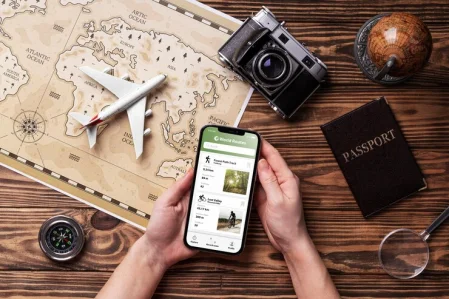
 Automotive Web Design
Automotive Web Design
 AI Traffic Management System
AI Traffic Management System
 AI Inventory Management Software
AI Inventory Management Software
 AI Software Development
AI Software Development  AI Development Company
AI Development Company  AI App Development Services
AI App Development Services  ChatGPT integration services
ChatGPT integration services  AI Integration Services
AI Integration Services  Generative AI Development Services
Generative AI Development Services  Natural Language Processing Company
Natural Language Processing Company Machine Learning Development
Machine Learning Development  Machine learning consulting services
Machine learning consulting services  Blockchain Development
Blockchain Development  Blockchain Software Development
Blockchain Software Development  Smart Contract Development Company
Smart Contract Development Company  NFT Marketplace Development Services
NFT Marketplace Development Services  Asset Tokenization Company
Asset Tokenization Company DeFi Wallet Development Company
DeFi Wallet Development Company Mobile App Development
Mobile App Development  IOS App Development
IOS App Development  Android App Development
Android App Development  Cross-Platform App Development
Cross-Platform App Development  Augmented Reality (AR) App Development
Augmented Reality (AR) App Development  Virtual Reality (VR) App Development
Virtual Reality (VR) App Development  Web App Development
Web App Development  SaaS App Development
SaaS App Development Flutter
Flutter  React Native
React Native  Swift (IOS)
Swift (IOS)  Kotlin (Android)
Kotlin (Android)  Mean Stack Development
Mean Stack Development  AngularJS Development
AngularJS Development  MongoDB Development
MongoDB Development  Nodejs Development
Nodejs Development  Database Development
Database Development Ruby on Rails Development
Ruby on Rails Development Expressjs Development
Expressjs Development  Full Stack Development
Full Stack Development  Web Development Services
Web Development Services  Laravel Development
Laravel Development  LAMP Development
LAMP Development  Custom PHP Development
Custom PHP Development  .Net Development
.Net Development  User Experience Design Services
User Experience Design Services  User Interface Design Services
User Interface Design Services  Automated Testing
Automated Testing  Manual Testing
Manual Testing  Digital Marketing Services
Digital Marketing Services 
 Ride-Sharing And Taxi Services
Ride-Sharing And Taxi Services Food Delivery Services
Food Delivery Services Grocery Delivery Services
Grocery Delivery Services Transportation And Logistics
Transportation And Logistics Car Wash App
Car Wash App Home Services App
Home Services App ERP Development Services
ERP Development Services CMS Development Services
CMS Development Services LMS Development
LMS Development CRM Development
CRM Development DevOps Development Services
DevOps Development Services AI Business Solutions
AI Business Solutions AI Cloud Solutions
AI Cloud Solutions AI Chatbot Development
AI Chatbot Development API Development
API Development Blockchain Product Development
Blockchain Product Development Cryptocurrency Wallet Development
Cryptocurrency Wallet Development About Talentelgia
About Talentelgia  Our Team
Our Team  Our Culture
Our Culture 
 Healthcare App Development Services
Healthcare App Development Services Real Estate Web Development Services
Real Estate Web Development Services E-Commerce App Development Services
E-Commerce App Development Services E-Commerce Web Development Services
E-Commerce Web Development Services Blockchain E-commerce
Development Company
Blockchain E-commerce
Development Company Fintech App Development Services
Fintech App Development Services Finance Web Development
Finance Web Development Blockchain Fintech
Development Company
Blockchain Fintech
Development Company E-Learning App Development Services
E-Learning App Development Services Restaurant App Development Company
Restaurant App Development Company Mobile Game Development Company
Mobile Game Development Company Travel App Development Company
Travel App Development Company Automotive Web Design
Automotive Web Design AI Traffic Management System
AI Traffic Management System AI Inventory Management Software
AI Inventory Management Software AI Software Development
AI Software Development AI Development Company
AI Development Company ChatGPT integration services
ChatGPT integration services AI Integration Services
AI Integration Services Machine Learning Development
Machine Learning Development Machine learning consulting services
Machine learning consulting services Blockchain Development
Blockchain Development Blockchain Software Development
Blockchain Software Development Smart contract development company
Smart contract development company NFT marketplace development services
NFT marketplace development services IOS App Development
IOS App Development Android App Development
Android App Development Cross-Platform App Development
Cross-Platform App Development Augmented Reality (AR) App
Development
Augmented Reality (AR) App
Development Virtual Reality (VR) App Development
Virtual Reality (VR) App Development Web App Development
Web App Development Flutter
Flutter React
Native
React
Native Swift
(IOS)
Swift
(IOS) Kotlin (Android)
Kotlin (Android) MEAN Stack Development
MEAN Stack Development AngularJS Development
AngularJS Development MongoDB Development
MongoDB Development Nodejs Development
Nodejs Development Database development services
Database development services Ruby on Rails Development services
Ruby on Rails Development services Expressjs Development
Expressjs Development Full Stack Development
Full Stack Development Web Development Services
Web Development Services Laravel Development
Laravel Development LAMP
Development
LAMP
Development Custom PHP Development
Custom PHP Development User Experience Design Services
User Experience Design Services User Interface Design Services
User Interface Design Services Automated Testing
Automated Testing Manual
Testing
Manual
Testing About Talentelgia
About Talentelgia Our Team
Our Team Our Culture
Our Culture
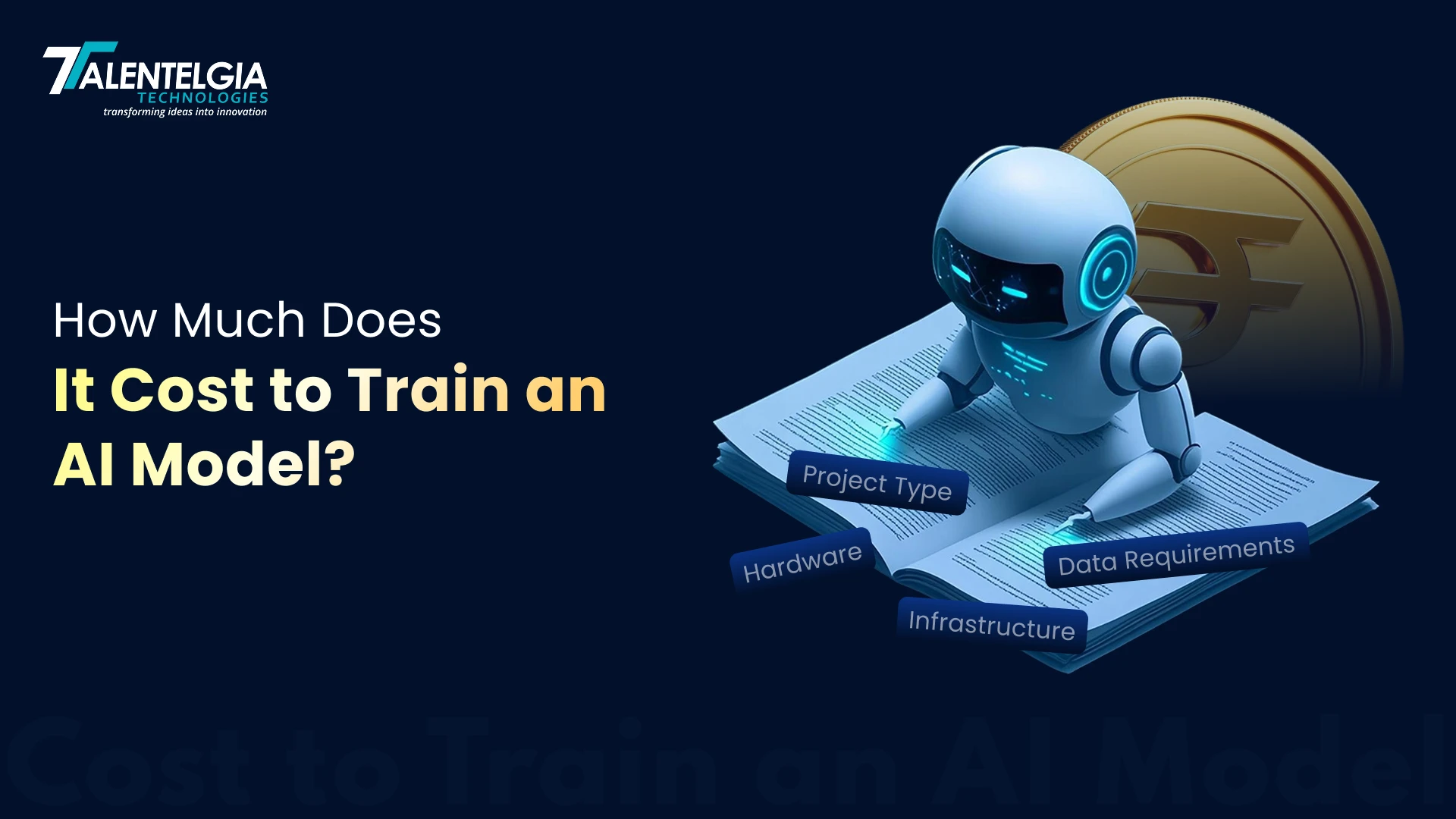
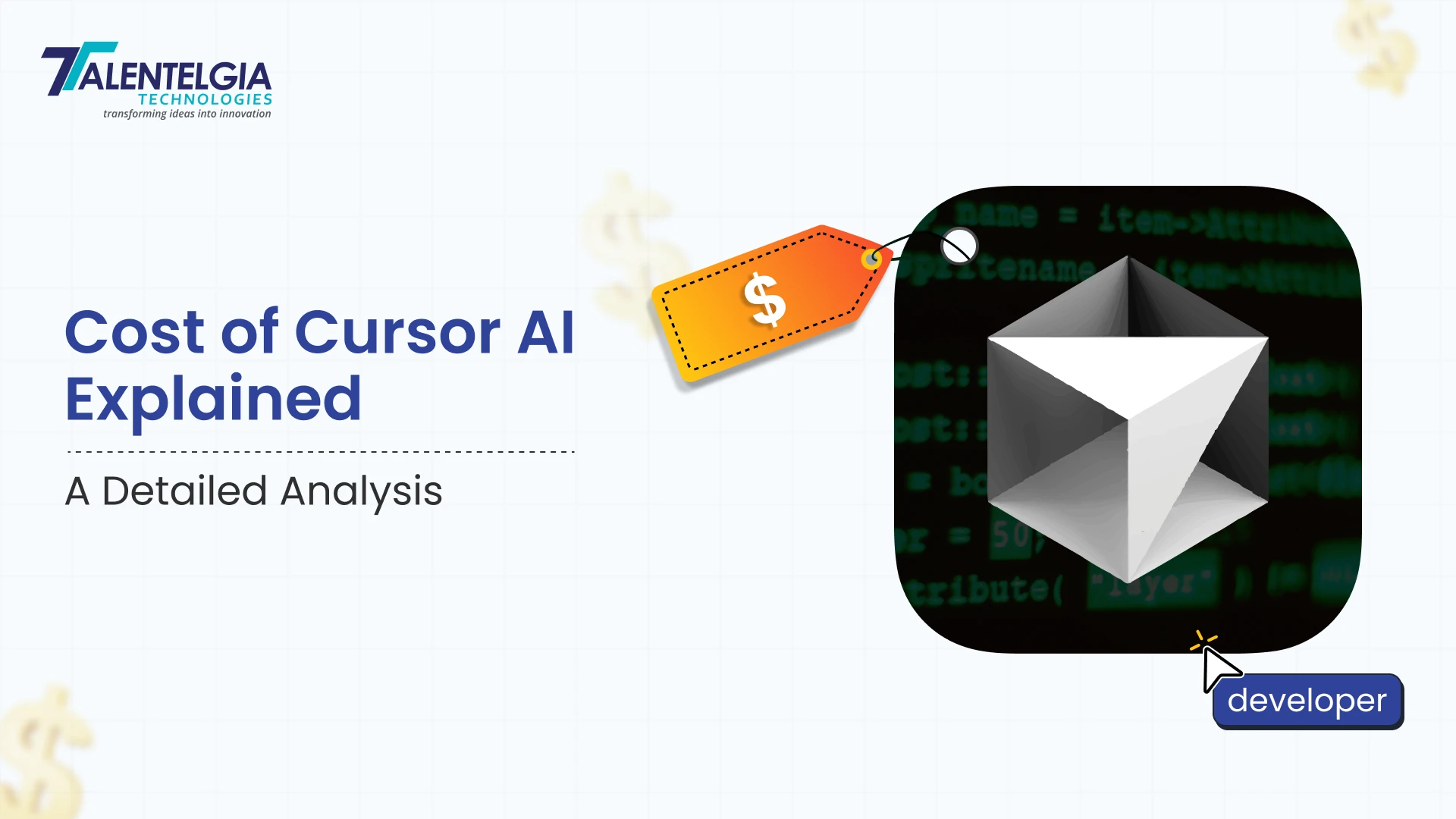

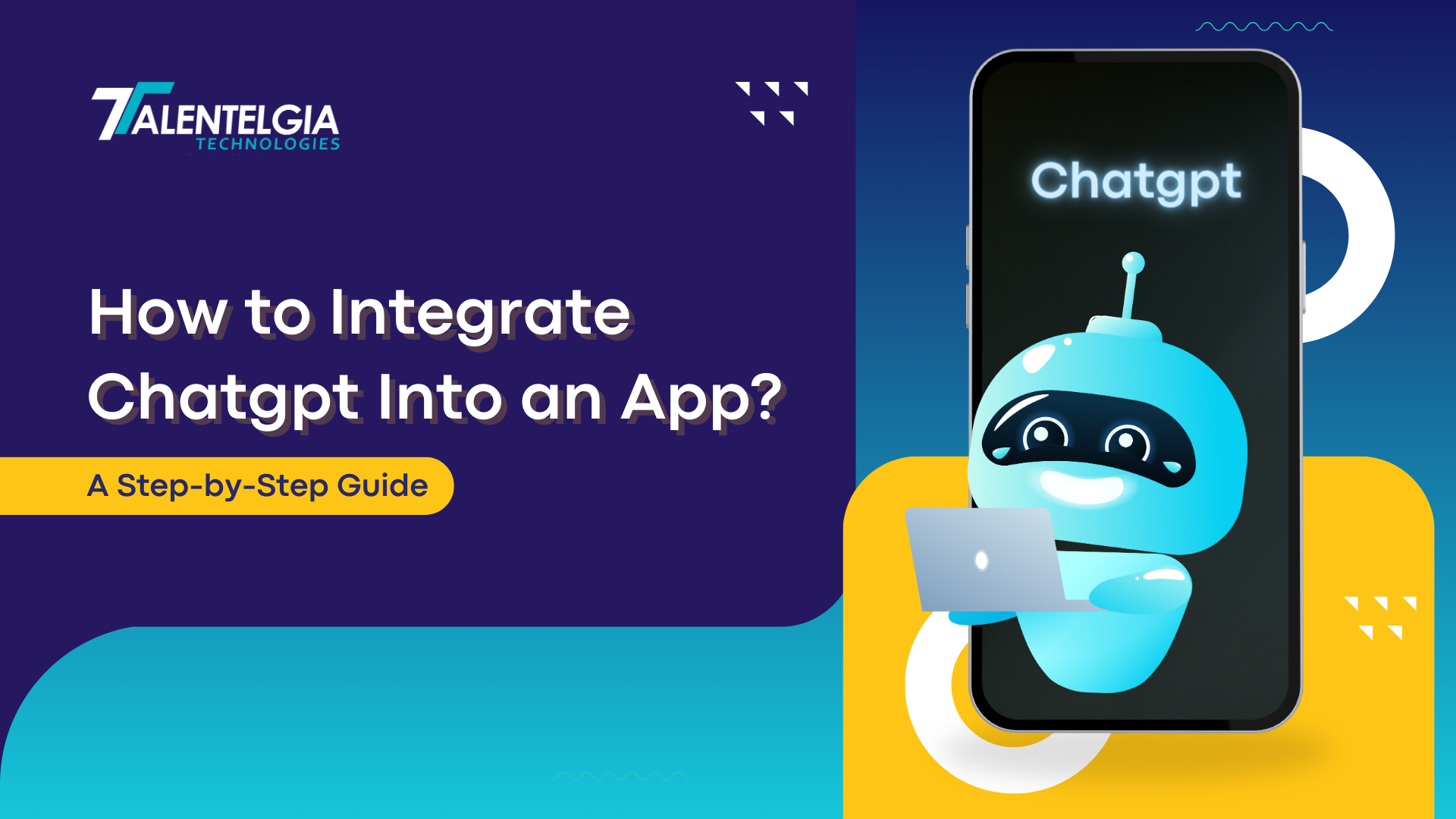

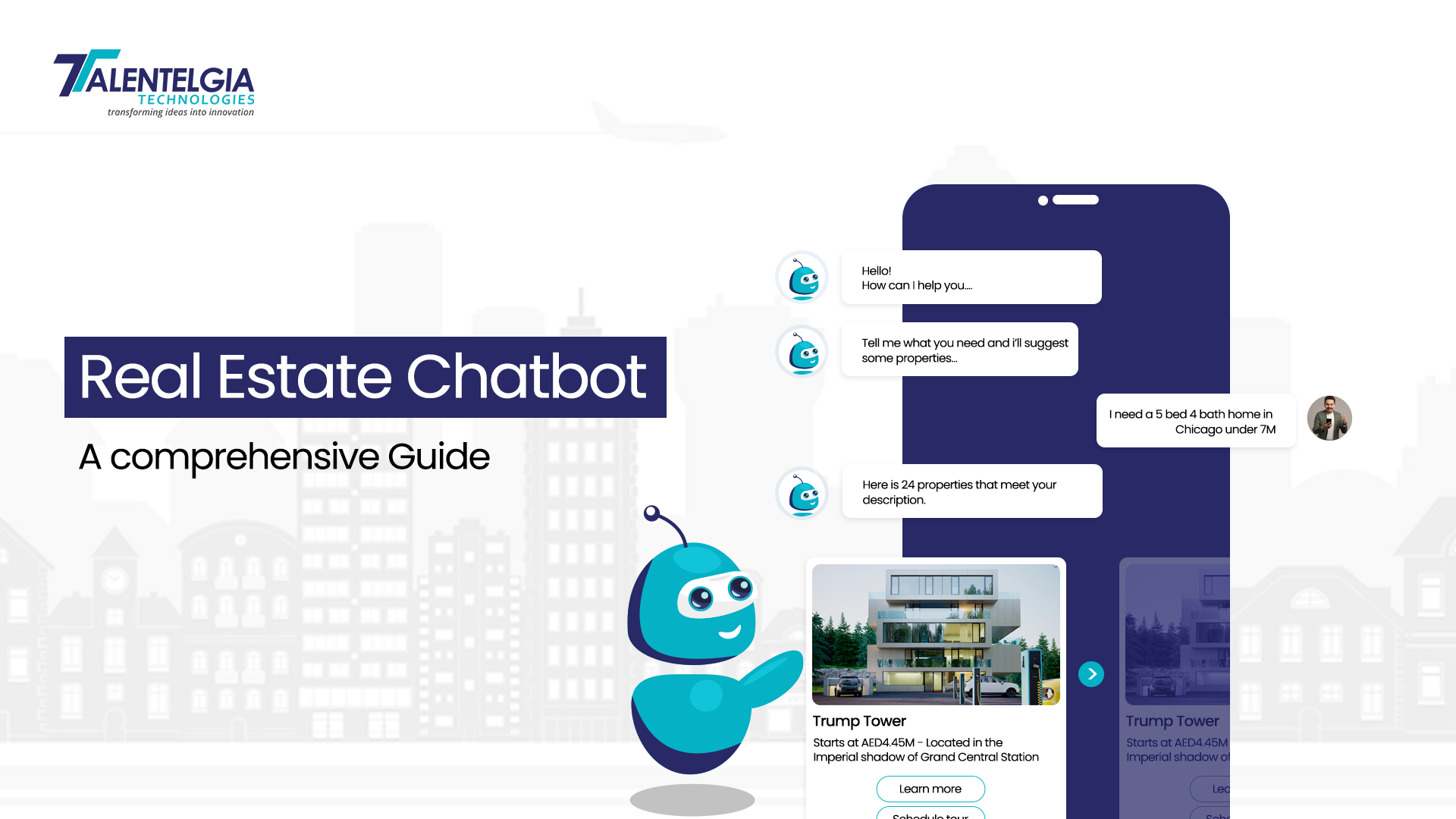










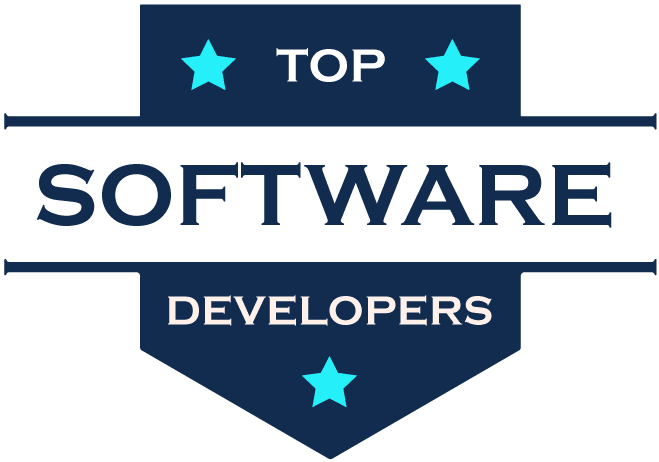
 Write us on:
Write us on:  Business queries:
Business queries:  HR:
HR: 




